Cornwall on my mind
Warning: this post may leave you with wanderlust. It’s only been a few weeks since I returned from my brief foray into Cornwall (that skinny, southwest bit of England), and I already can’t wait to go back.
This was a quick trip by train, with just a small backpack and a rough itinerary in mind. My first destination: St. Ives, the seaside town that has long attracted holidaymakers (British for vacationers) and artists. It’s a six hour train ride from London; one long (but very scenic) ride, and then a transfer to a two-car local train for the last fifteen minutes. In spite of a rainy forecast, the sun was shining when I arrived so I quickly checked into my bed and breakfast, then headed into the town.
I had arrived at low tide, when you can walk out into the harbour, the sand dotted with gulls, colourful floats, and fishing boats waiting for the tide to float them again. The blue sky was quickly clouding over, but even so the water was turquoise and I could see how it might feel tropical on a warm sunny day.
St. Ives has that salty feel and smell of a beach holiday, even if it’s cold and damp enough for you to be wearing four layers with the zippers pulled up to your chin. The blue sky didn’t last long, but there’s something special about a seaside town shrouded in fog and mist, too.
The narrow, hilly streets are lined with houses of stone and stucco, and the huge variety of art galleries feature some beautiful work as well as fun beachy souvenirs. The Tate Modern has a branch here, a sleek, contemporary museum built on the site of an old gasworks, featuring artists with links to the area. The Barbara Hepworth Sculpture Museum is here too, although I skipped that. In about 24 hours I saw most of the town, but you could easily spend more time here.
- A view from the hill, on a wet morning
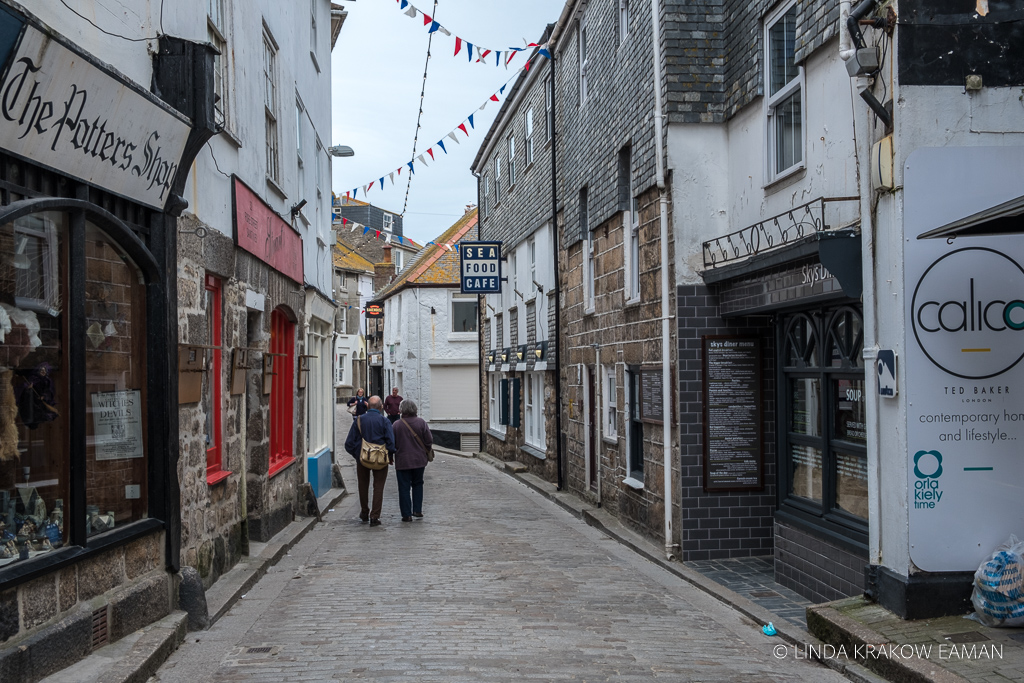
There’s a lovely walk between Porthmeor beach (site of the Tate) and St. Ives harbour.
Next stop: Penzance. (No, I did not see any pirates—although the coastline here was once a smugglers’ haven.) Another short train ride, followed by a walk through a pleasant high street and a residential neighbourhood, to another B&B.
It seems that people generally use Penzance as a home base to explore the area. Although I would have liked to explored the town, my B&B hosts suggested that my limited time was better spent elsewhere.
Just east of Penzance is St. Michael’s Mount. The earliest buildings on the island date to the 12th century, built by the Benedictine monks that founded Mont St. Michel in France. Over the centuries it was expanded and the St. Aubyn family has lived there for 400 years. In the 1950s the family made an arrangement with the National Trust that would ensure the castle’s upkeep, make it accessible to the public, and allow the family to continue living there. If you go, try to time your visit so you get to walk on the cobblestone causeway. It is uncovered only at low tide, and the rest of the time small motor boats ferry visitors across. I spent much more time here than I expected, exploring the grounds, visiting the castle, and enjoying the café with a view. The displays make it easy to imagine what it’s like to be one of the small community that lives and works on the island.
Across from St. Michael’s Mount, the town of Marazion is tiny but picturesque. It’s a few miles back to Penzance along the pebbled beach and seawall—I can’t say I really recommend the walk, and would consider a bus or cab next time.
My research into Cornwall came up with a long list of towns and villages I would have liked to visit, but getting to more than a few of them would have required renting a car, which for various reasons I chose to avoid. So I reluctantly picked just a few… Upon arriving back in Penzance I took the bus to the nearby town of Mousehole (pronounced “Mowzel”). A peaceful little village and harbour, although I arrived just as the shops and cafes were just closing up. It might have been interesting to climb up above the town, but at this point I was too tired… thank goodness for fish and chips and a pint, just around the corner from the B&B.
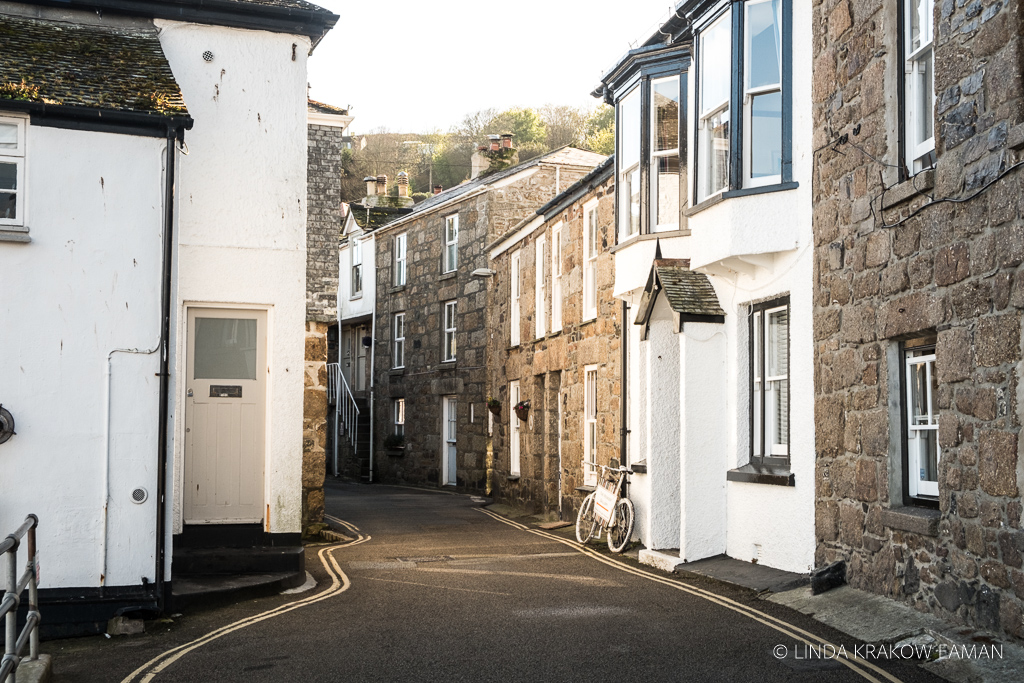 Early the next morning I found myself waiting for the bus to Porthcurno, chatting with a man who was heading to his home near Land’s End (the aptly named westernmost tip of Cornwall). Originally from Birmingham, he described living on the outskirts of a tiny village, raising border collies, with chickens and a few other farm animals, as having found the best place in the world.
Early the next morning I found myself waiting for the bus to Porthcurno, chatting with a man who was heading to his home near Land’s End (the aptly named westernmost tip of Cornwall). Originally from Birmingham, he described living on the outskirts of a tiny village, raising border collies, with chickens and a few other farm animals, as having found the best place in the world. On the bus I discovered how challenging the roads are—narrow single lane, but with two-way traffic—and how beautiful the countryside. My high seat allowed me to see over the tall hedgerows, and the way was dotted with tiny villages whose stone houses and barns have been standing for hundreds of years. The view of Sennen Cove almost had me hopping off the bus, but I stayed on, through the quick stop at Land’s End, and got off at Porthcurno—which my hosts had insisted was the “best bit” of the coast in that area.
Porthcurno was the point at which many submarine telegraph cables—transatlantic and to other locations—came ashore, and it was the site of an engineering school as well. I skipped the telegraph museum, but this little cable house on the way to the beach was built in 1929 to house the terminals of the undersea telegraph cables. By the start of WW2, the cable station at Porthcurno was the largest and most important in the world with 14 cables terminating here. Each terminal is marked with the cable route, such as Bilbao or Gibraltar.
The most spectacular thing at Porthcurno, though, is the beach. And then you notice the steep steps winding up the side of the cliff—the route to the Minack Theatre for those who don’t want to take the road.
The Minack Theatre is a source of immense local pride, the creation of Rowena Cade with the help of her gardener Billy Rawlings and friend Charles Angove. Still offering regular productions (of varying quality, from what I’ve heard) the cliffside theatre has been expanded over the years, but Cade and friends originally built it and the gardens by hand, in the 1930s. It’s pretty impressive, and worth the few pounds they charge to visit. Skip the café though. Coffee and Cornish pasty were both lousy, and the Porthcurno Beach Café on the road is a much better choice.
From the theatre I headed west, following a bit of the Southwest Coast Path. One thing I’ve learned about hiking here is to bring lots of layers and then not let the weather forecast deter you. The predicted rain never arrived, other than a minute-long sprinkle. Even a 60% chance of rain means a 40% chance of no rain, right?
The guy at the B&B was right: the hike between Porthcurno and Lands End is absolutely spectacular. I only had time to go part way before turning around, so I guess I’ll just have to go back!
Back at Porthcurno, having misread the schedule I found myself waiting for the 4 pm bus and worrying I’d miss my train back to London. But as I sipped coffee and sketched, the owner of the afore-mentioned Porthcurno Beach Café noticed my Tilley hat and asked if I was Canadian! (Funny enough, I bought the iconic Canadian hat in London.) It turns out he had lived in Montreal (my home town) and his son lives in Toronto (where my daughter lives). And he called the local cab to take me back to Penzance in plenty of time to catch the train. Invited to sit up front I had a lovely chat with the driver, and count myself lucky to have spent half an hour with someone who has lived his whole life in a small Cornish village.
Along with eating local seafood, Cornish pasties, Cornish ice cream, cream tea (the Cornish way–strawberry jam first, clotted cream second), I enjoyed seeing the bits of the Cornish language (on signage–I never heard anyone speaking it).
I somewhat wistfully made the train, and was back home in London just after midnight. Cornwall seems to be one of those places that gets under your skin, and I only saw a tiny bit of it. I can’t wait to go back!
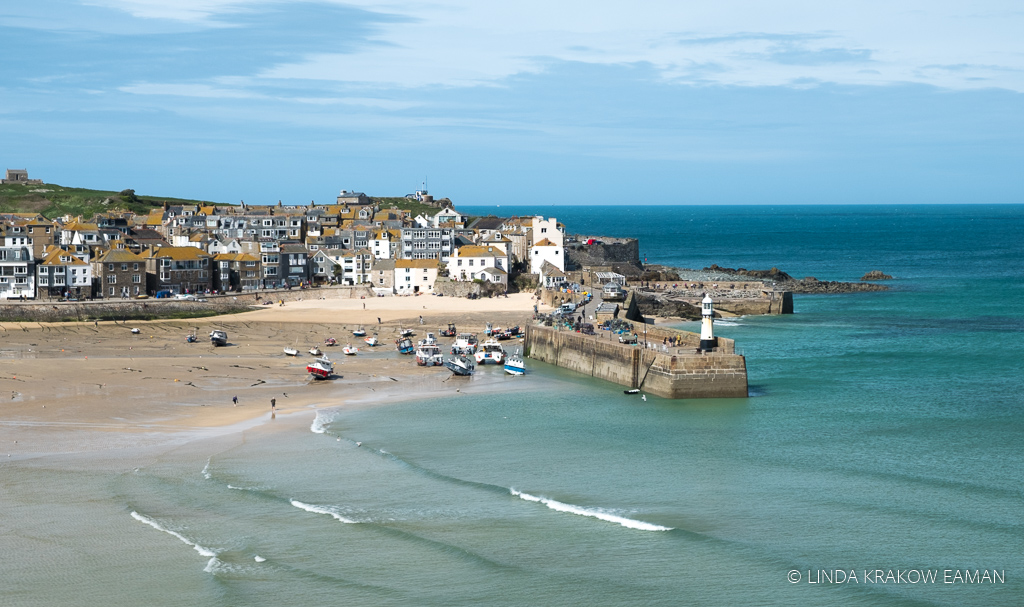
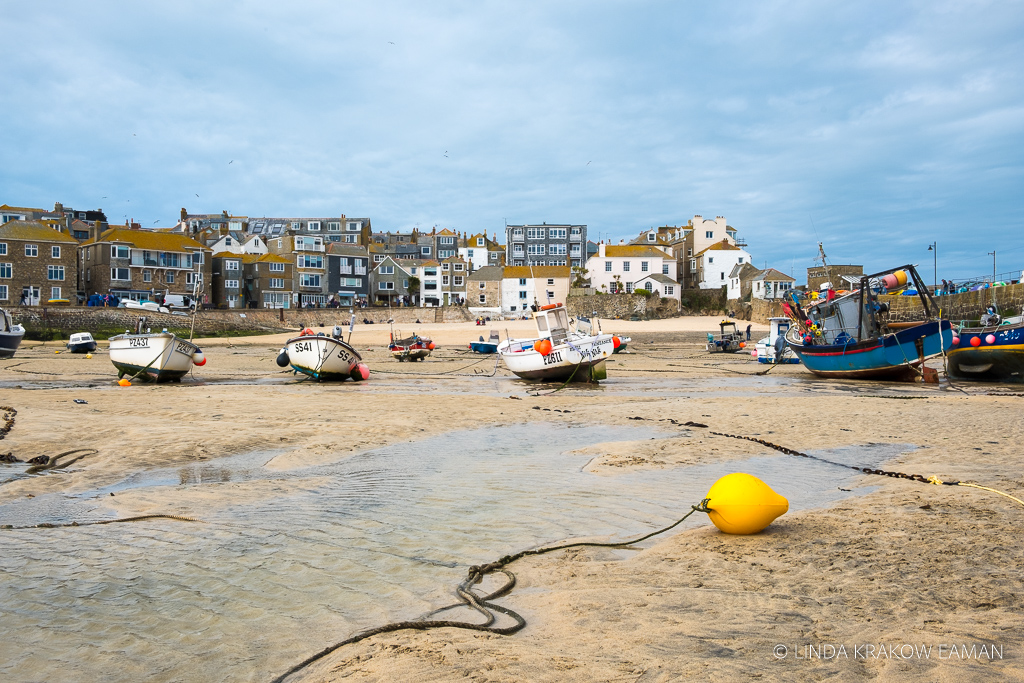

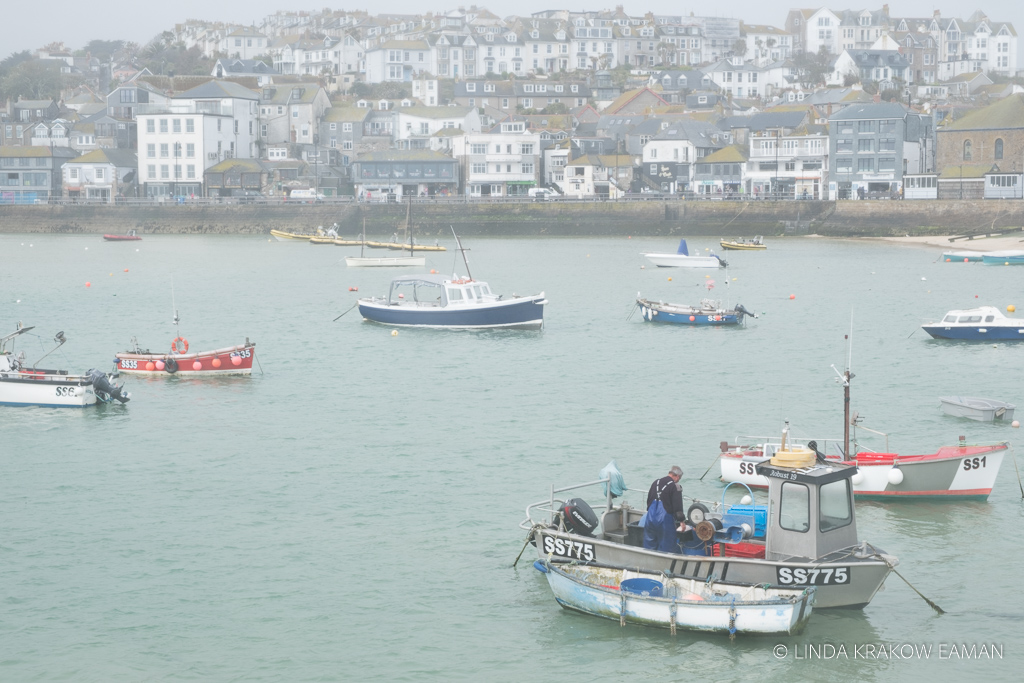
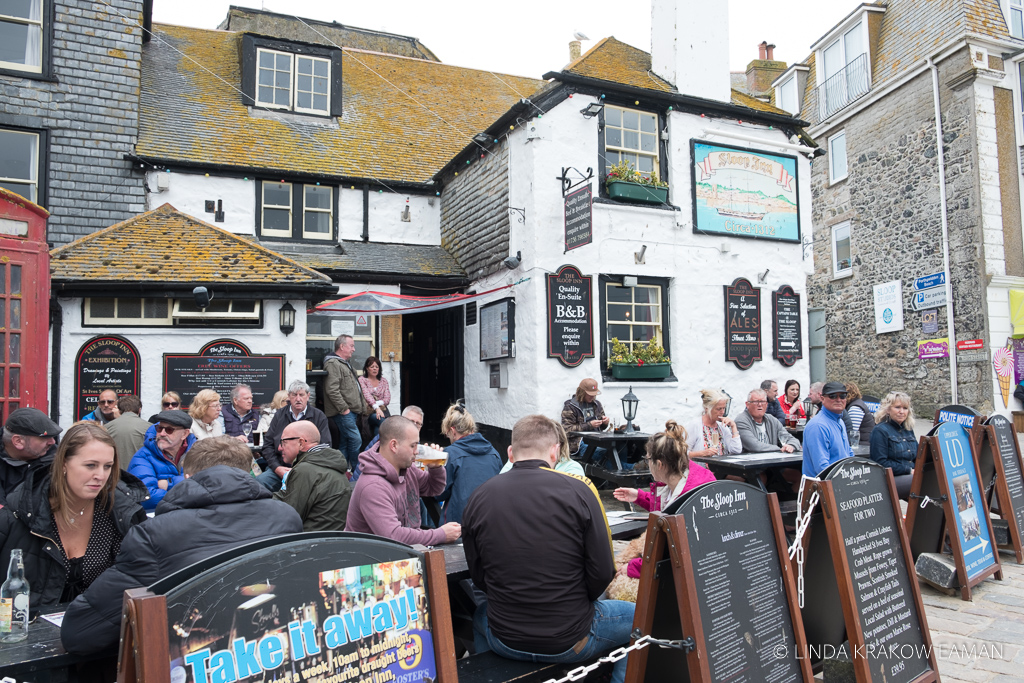
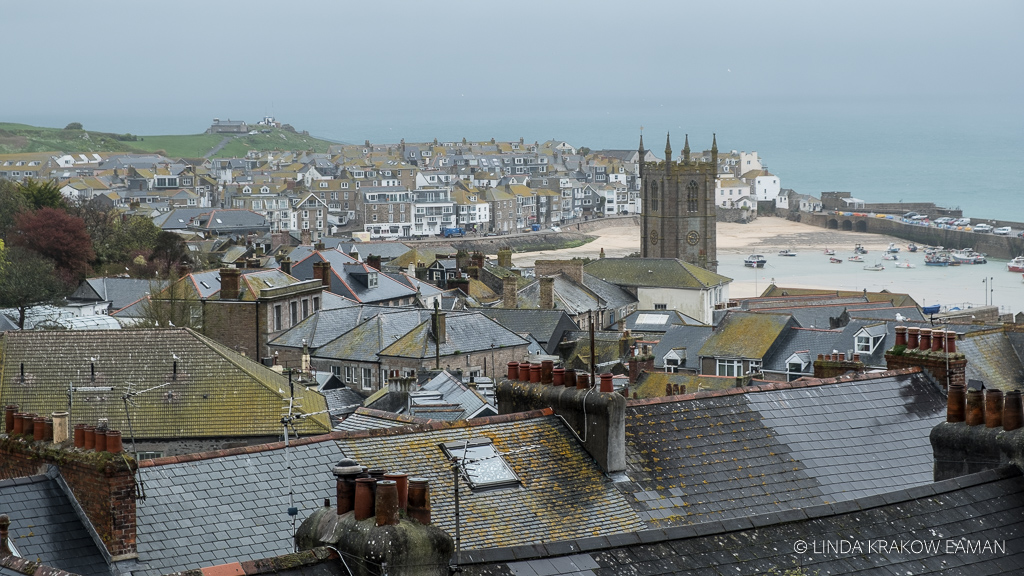
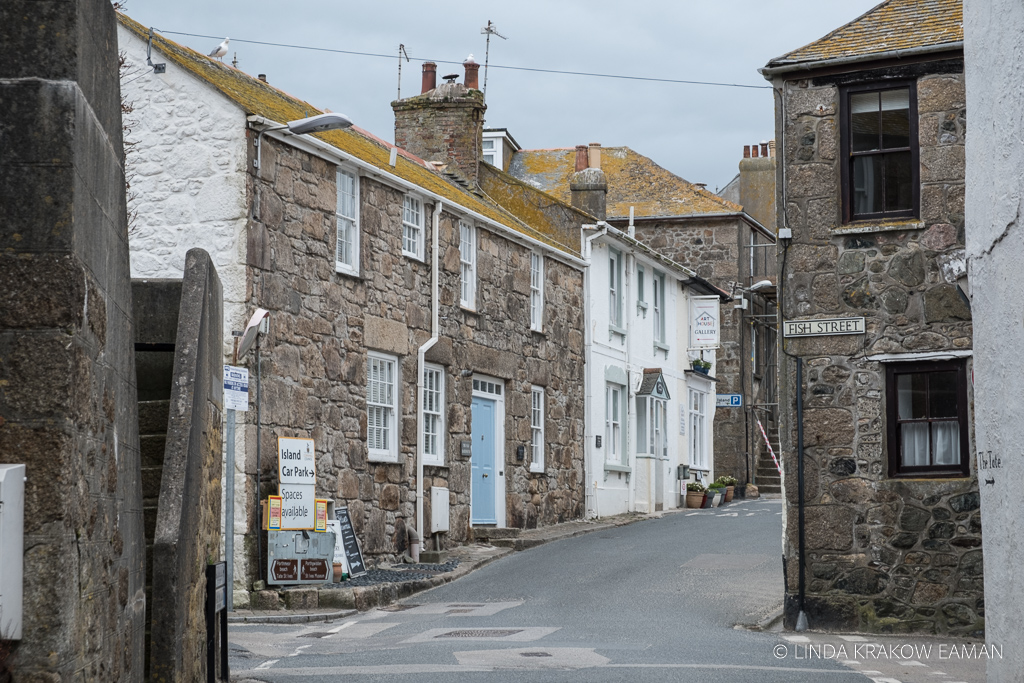
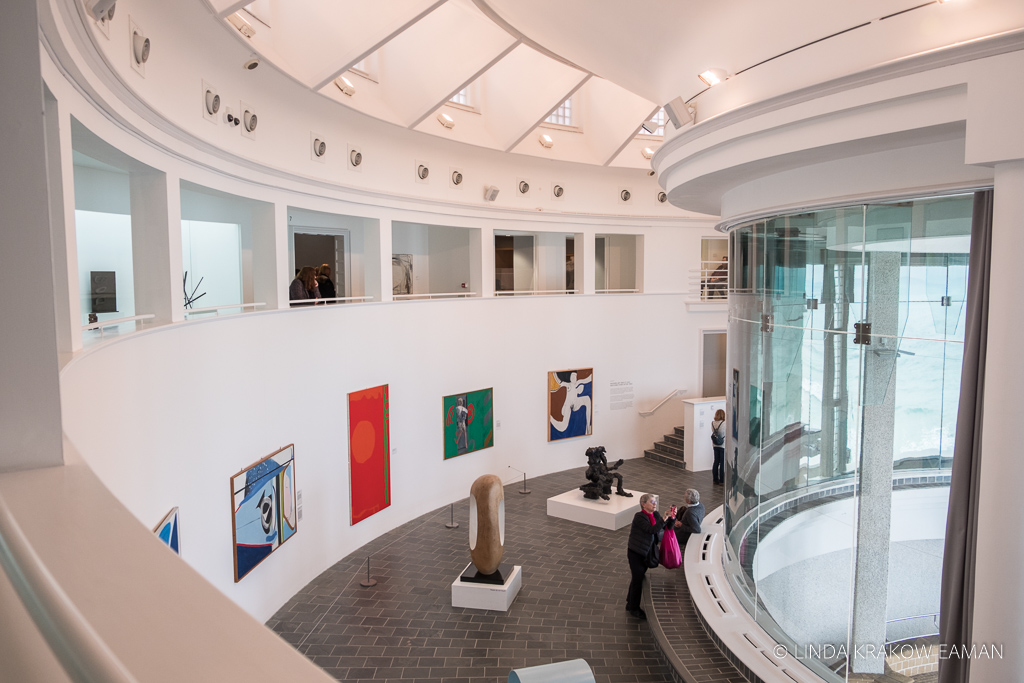


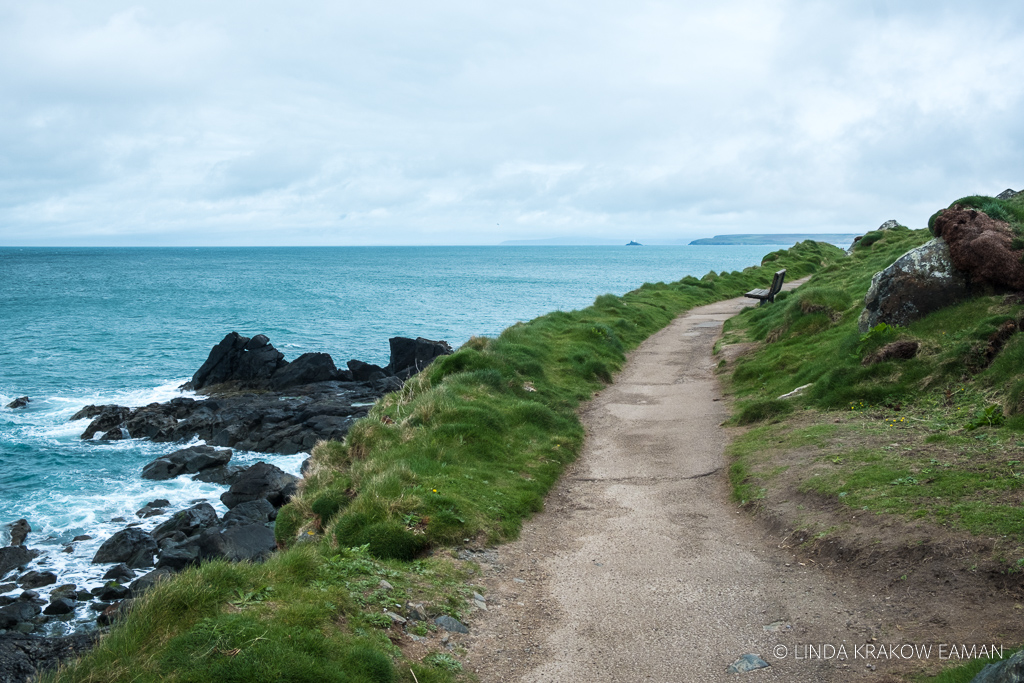
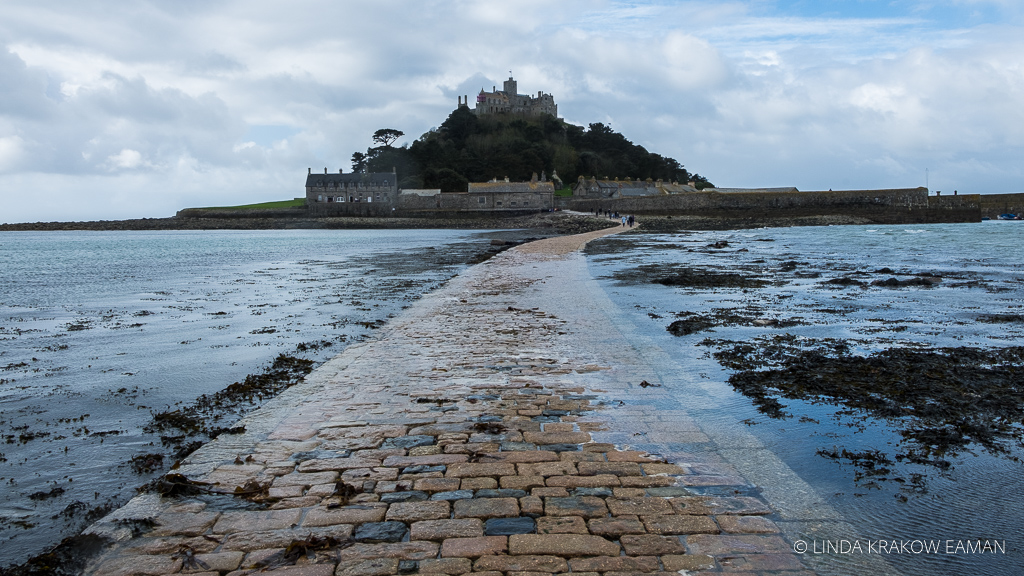
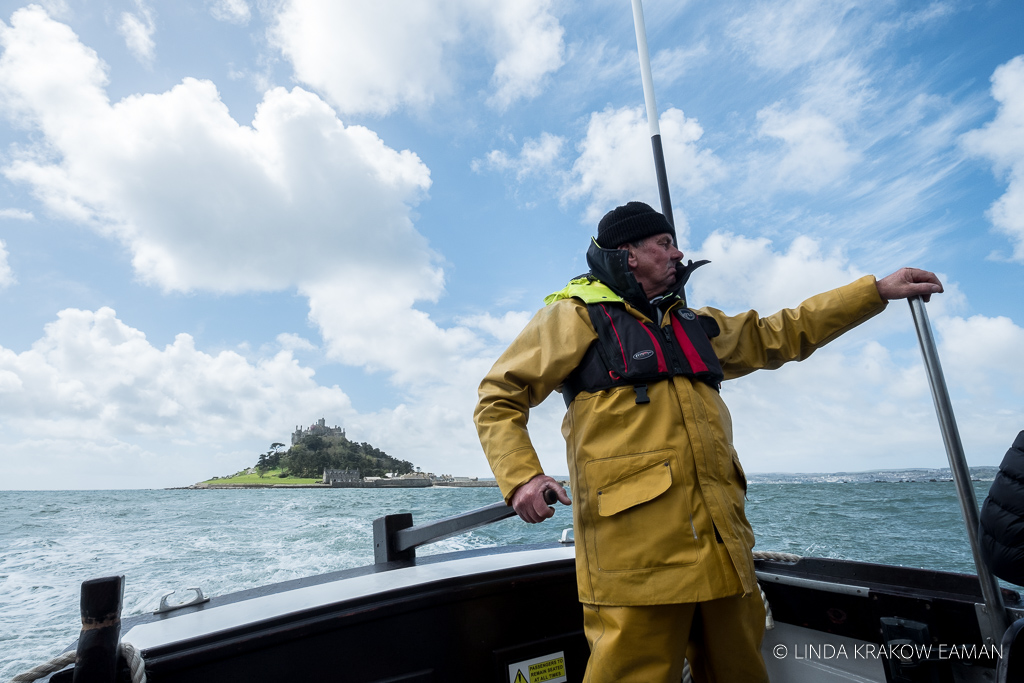
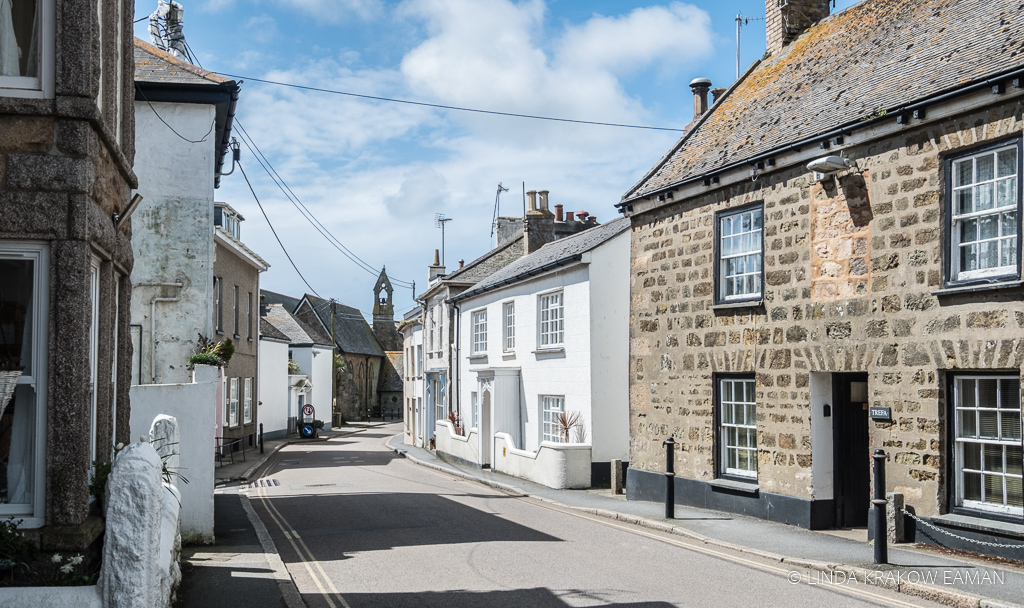
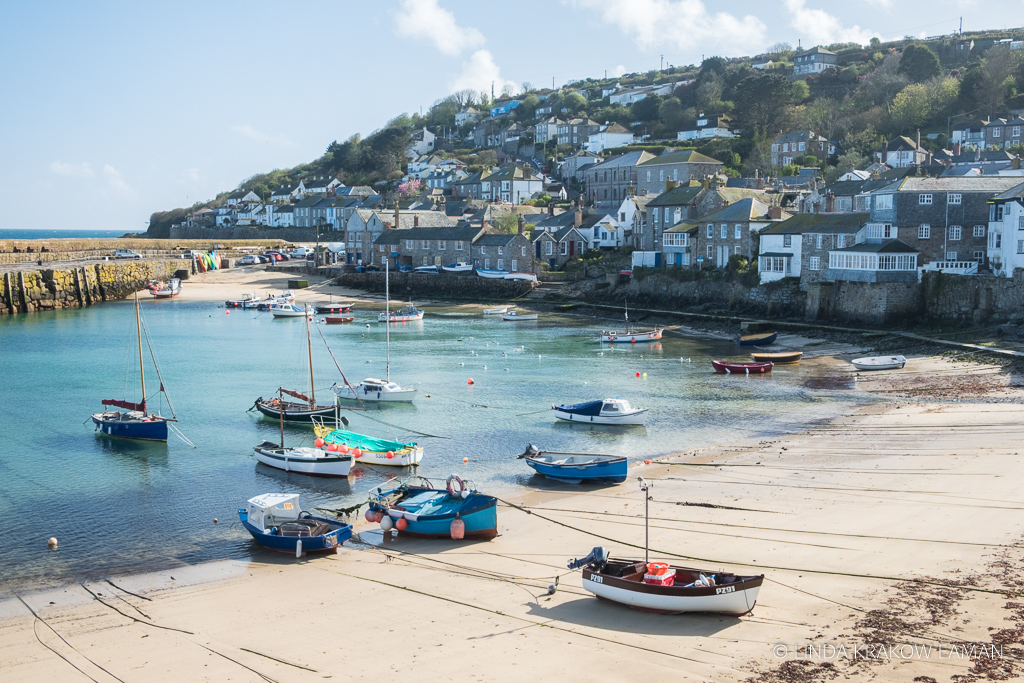

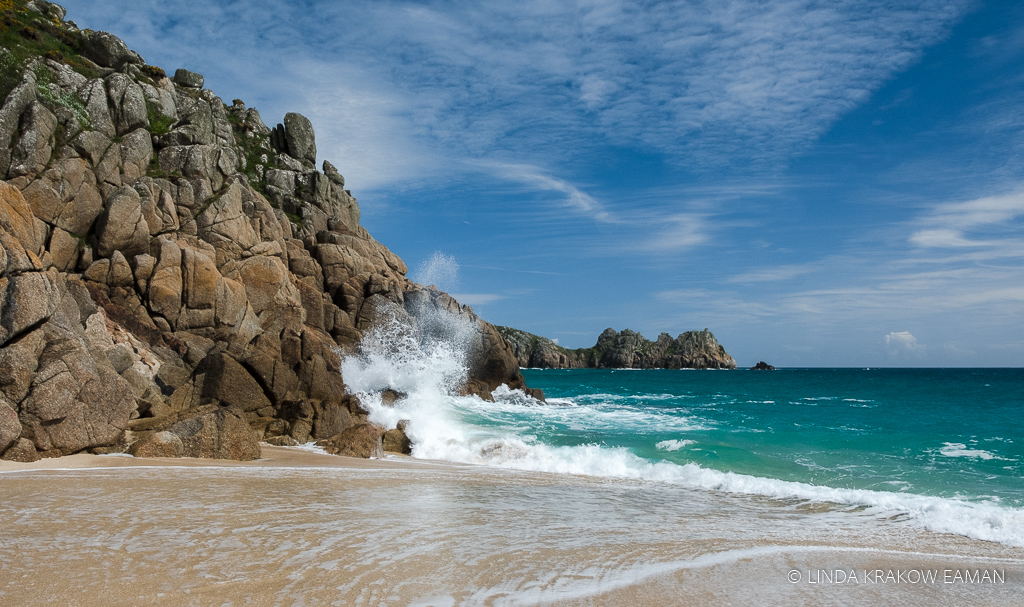
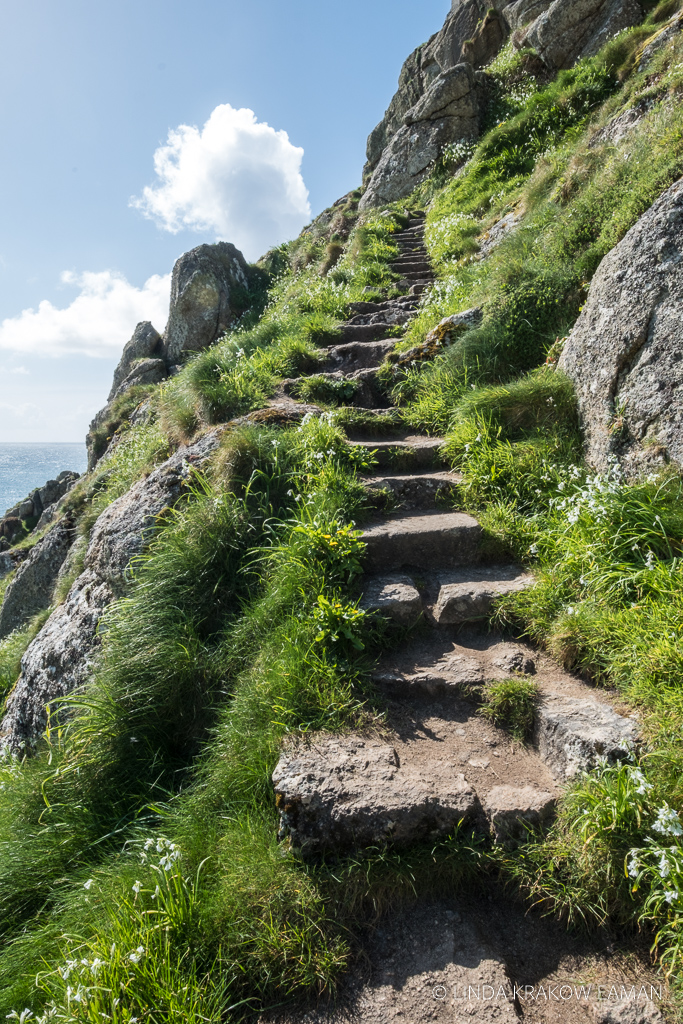
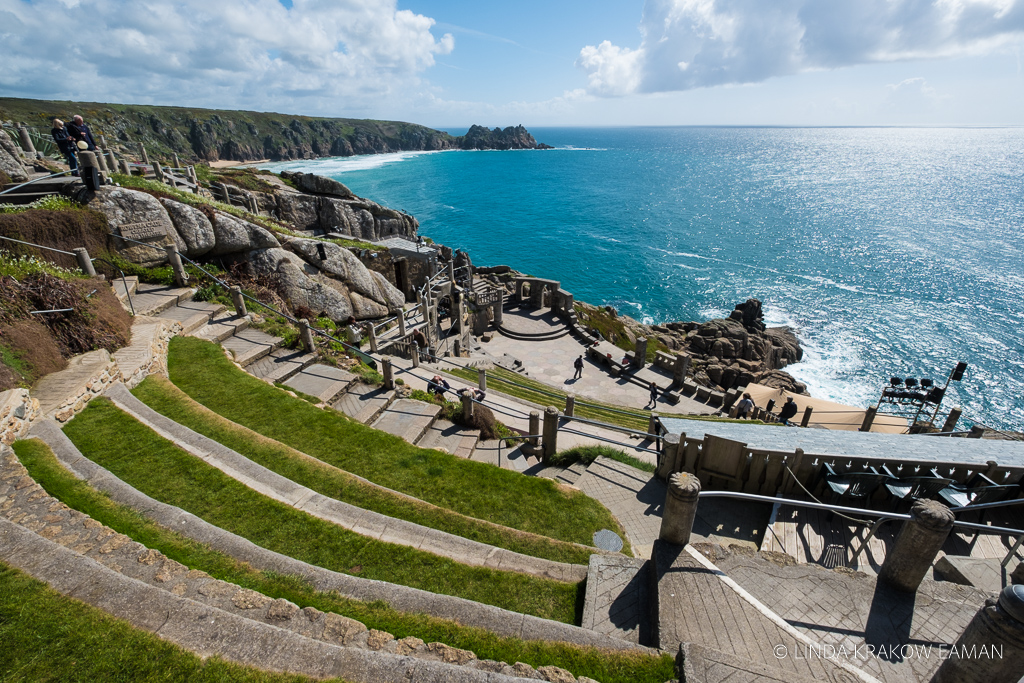

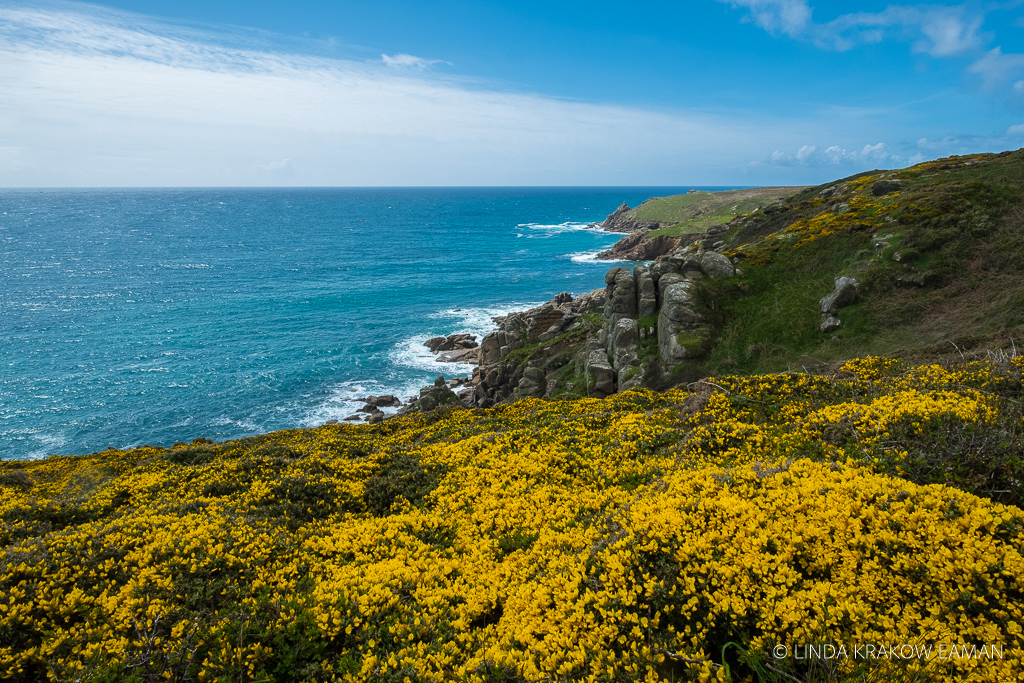
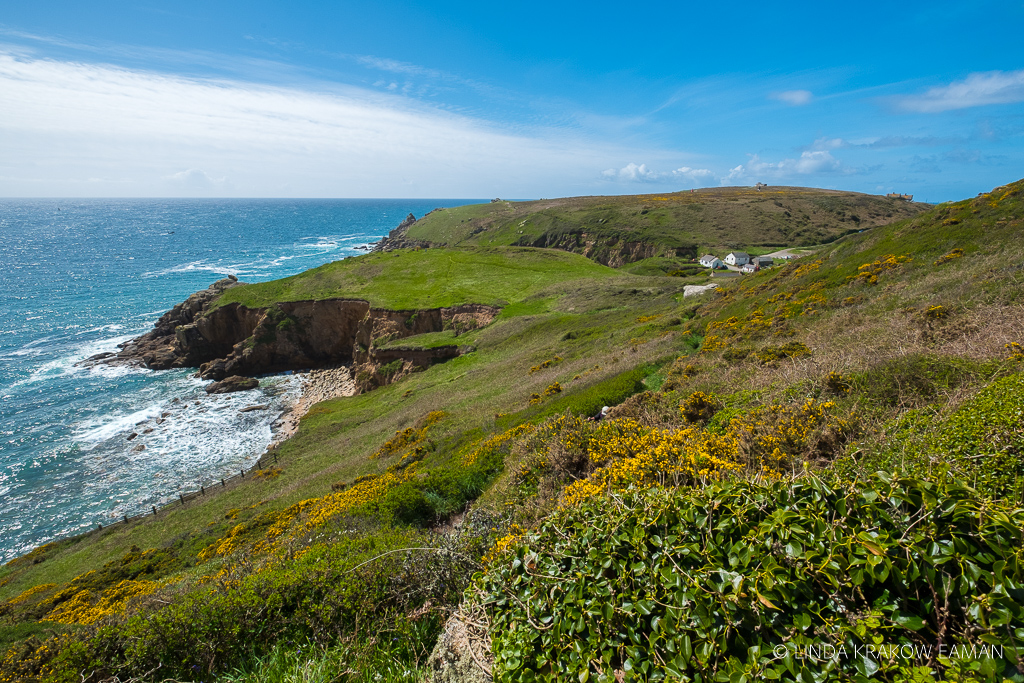
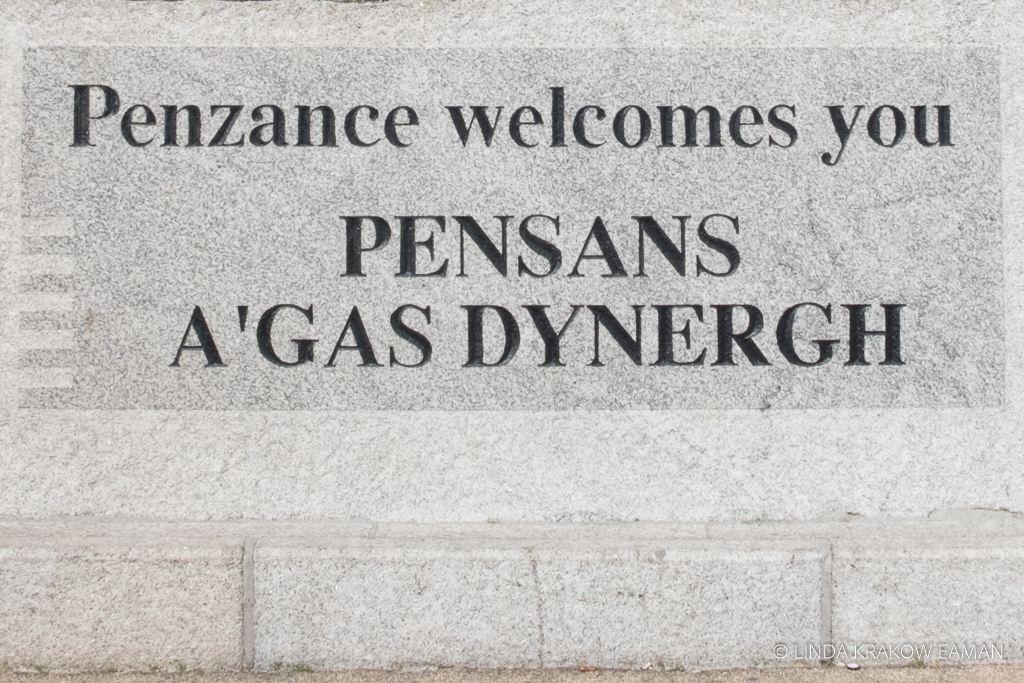
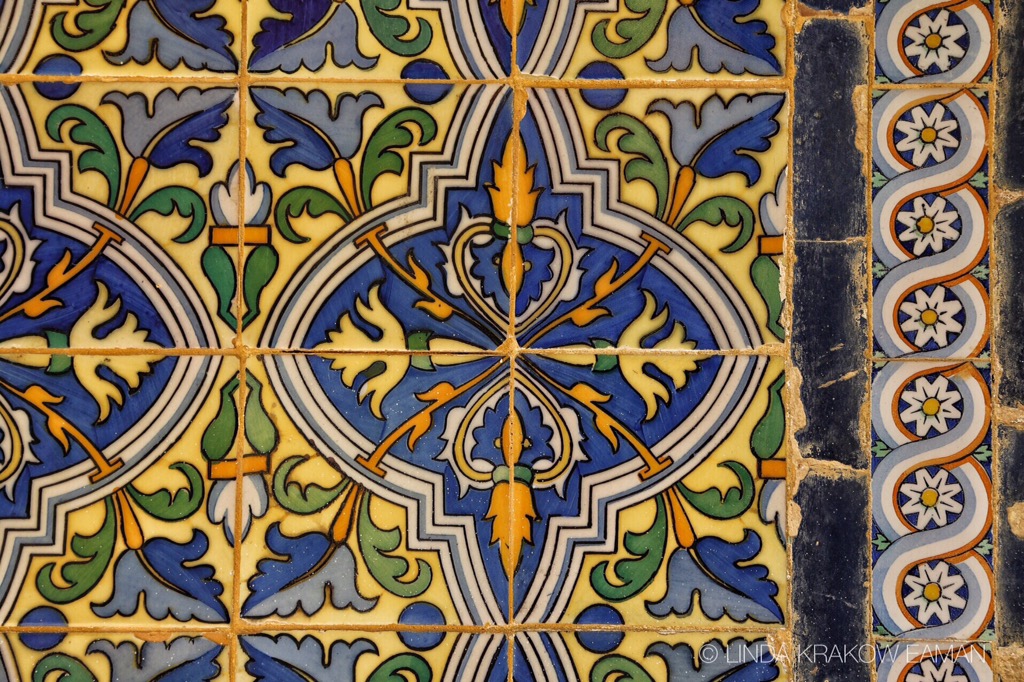
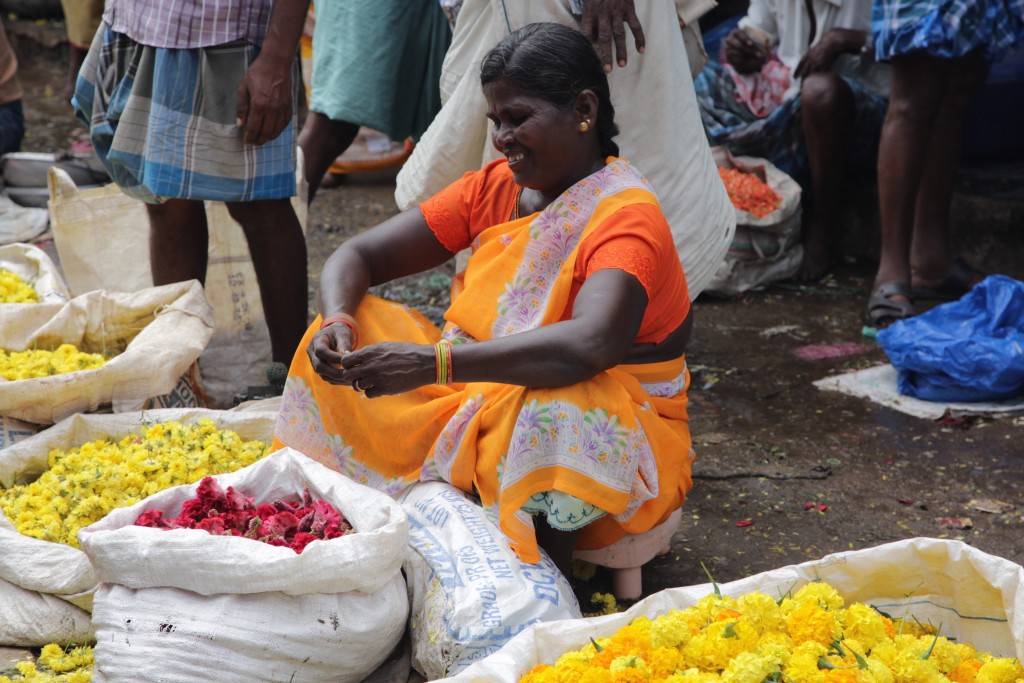
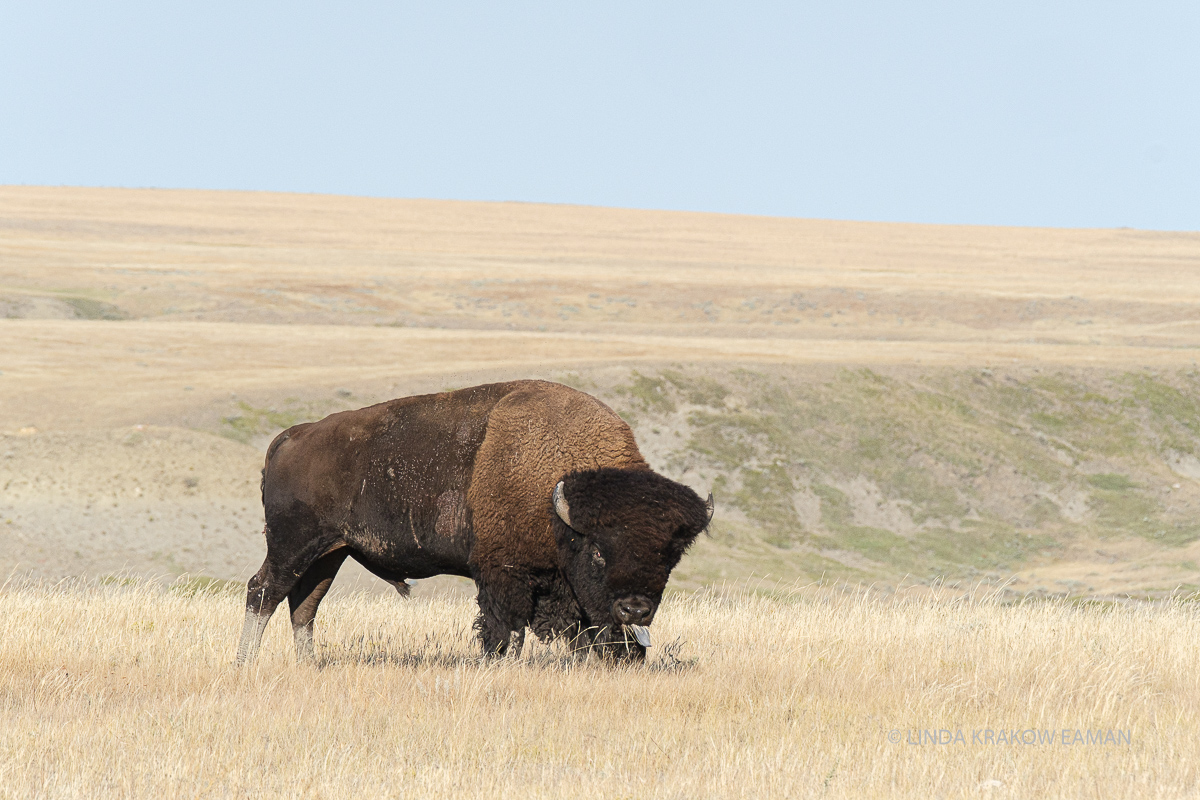
Travel writing could be your nth (?) career! I feel like I was with you! Love these!
Thanks Kim! I’m glad you’re enjoying them.
Have lived on the side of a mountain with crisp clean air and river water, and much rather there than on the coast, although that’s where we live now. But for Cornwall, and most coastal areas in New Zealand I’d make an exception. Love your photos, thanks very much!